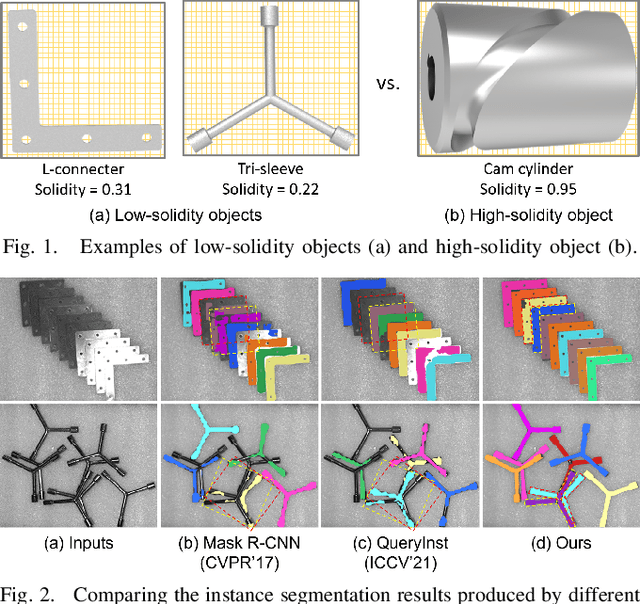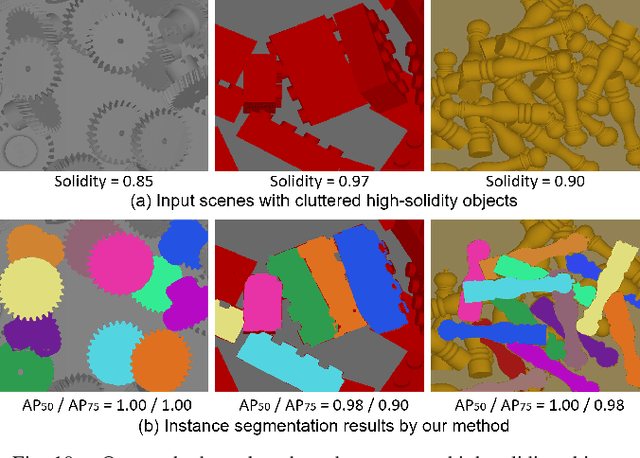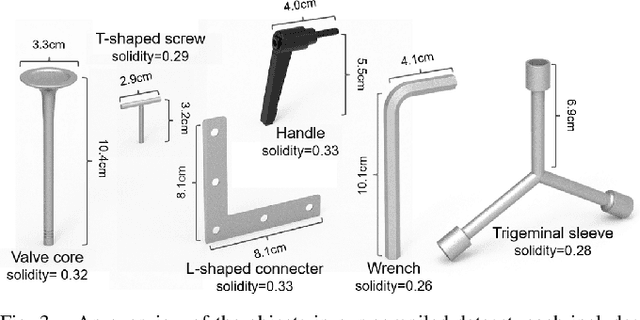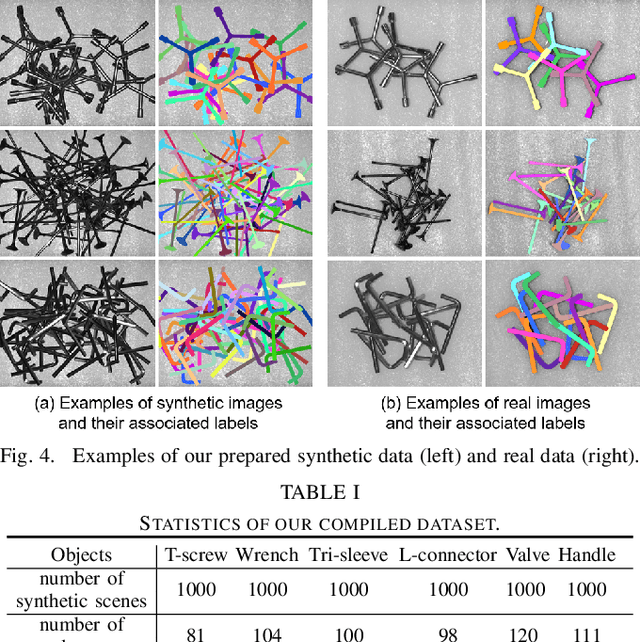Biqi Yang
SKU-Patch: Towards Efficient Instance Segmentation for Unseen Objects in Auto-Store
Nov 08, 2023



Abstract:In large-scale storehouses, precise instance masks are crucial for robotic bin picking but are challenging to obtain. Existing instance segmentation methods typically rely on a tedious process of scene collection, mask annotation, and network fine-tuning for every single Stock Keeping Unit (SKU). This paper presents SKU-Patch, a new patch-guided instance segmentation solution, leveraging only a few image patches for each incoming new SKU to predict accurate and robust masks, without tedious manual effort and model re-training. Technical-wise, we design a novel transformer-based network with (i) a patch-image correlation encoder to capture multi-level image features calibrated by patch information and (ii) a patch-aware transformer decoder with parallel task heads to generate instance masks. Extensive experiments on four storehouse benchmarks manifest that SKU-Patch is able to achieve the best performance over the state-of-the-art methods. Also, SKU-Patch yields an average of nearly 100% grasping success rate on more than 50 unseen SKUs in a robot-aided auto-store logistic pipeline, showing its effectiveness and practicality.
Towards Robust Part-aware Instance Segmentation for Industrial Bin Picking
Mar 05, 2022



Abstract:Industrial bin picking is a challenging task that requires accurate and robust segmentation of individual object instances. Particularly, industrial objects can have irregular shapes, that is, thin and concave, whereas in bin-picking scenarios, objects are often closely packed with strong occlusion. To address these challenges, we formulate a novel part-aware instance segmentation pipeline. The key idea is to decompose industrial objects into correlated approximate convex parts and enhance the object-level segmentation with part-level segmentation. We design a part-aware network to predict part masks and part-to-part offsets, followed by a part aggregation module to assemble the recognized parts into instances. To guide the network learning, we also propose an automatic label decoupling scheme to generate ground-truth part-level labels from instance-level labels. Finally, we contribute the first instance segmentation dataset, which contains a variety of industrial objects that are thin and have non-trivial shapes. Extensive experimental results on various industrial objects demonstrate that our method can achieve the best segmentation results compared with the state-of-the-art approaches.
 Add to Chrome
Add to Chrome Add to Firefox
Add to Firefox Add to Edge
Add to Edge